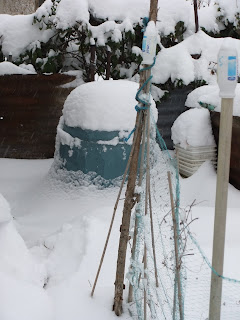wow what a busy two weeks that was! but it doesn't stop there - there is lots of work to be done over the Christmas break and i have made my geeky timetable as long as i stick to it i could even have a couple of days off before we come back for term 2!!!
Over the past few weeks i feel as though my head has been split into 3-
History and Philosophy of Garden Design / Historic Garden Conservation / Master planning
Luckily we have completed, handed in our Historic Conservation Management Plan and its already marked! I am very pleased with my well earned A , and well done to the rest of the group who all worked really hard and too got great results.
All our work will be online soon- i will post the link once i have it- the online exhibition will be all the collaborated group work and the individual Historic Conservation Management Plans of Greenwich Park, London.
Here is a little part of my document: Vision and 3 of my Key Recommendations:
The Vision
The vision for Greenwich Park is to emphasise education with the promotion of its diverse history.
As a world heritage site it is to be an example of educating the local , wider community and the
world of all the historic layers the park has: From the Anglo-Saxon Burial grounds to the Royal
Observatory – Greenwich holds examples of triumph and brilliance of each time period. With
the education will come the understanding of the importance of this site.
The park is to be an area of enjoyment, recreation and leisure for locals and visitors, with
appropriate amenities and areas for this.
The park is to demonstrate how to create areas that are beneficial to wildlife in the city with the
introduction of select habitat areas thus creating awareness and educating all about the issues
and importance of wildlife and habitats.
Visitors will once again feel that they are within a royal park.
Signs, Information and Educating
Due to the amount of visitors the park receives it is important that information is provided and is
accessible to all. This can be done with the use of interactive screens: with the interactive delivery
of the information will make it fun and engaging. It will take up less space and people can find the
information that they want, in their language. The screens can be put among sculpture (see below) to
integrate is as part of an historic landscape.
-Capturing the layers of history with framed views: a picture of the same view and how it has changed
through time- with the final frame empty to see its current layer.
-For children they can imagine how it might look in the next layer and can draw how they think it will
be in 100 years time.
Framed views within and out of the park with information of what you see within the frame.
The Giant Steps
Le Notre (who never visited England) designed the grass parterre which were implemented
in 1662 and the giant steps that over looked it,the steps are shown in all 18th Century
prints of the park. The remains of the Giant Steps rise up to the statue of James Woolfe.
Each terrace was 40 yards wide, and on either side Scotch firs were planted 24 feet apart.
These trees were brought by General Monk from Scotland in 1664, and until forty years
ago many were standing.
The Meadow Walks
Areas where the Ancient acid grassland ispresent are being destroyed by the constant use of heavy machinery showing the lack of care and understanding of its importance.
Lowland Acid Grassland is an important habitat for nature conservation throughout the Greater London area. Lowland acid grassland develops on low-nutrient, acidic soils (pH 4 to 5.5) overlying acidic rocks or on the free draining, gravelly and sandy soils found in many parts of London. Grazing (or cutting) is needed to prevent invasion by scrub and trees this can be done once a year or every two years with the introduction of sheep for the grazing period.
The acid grasslands of Greater London, south Essex and north west Kent are an important home for a distinctive community of insects and spiders – many of which are nationally scarce. This community is collectively known as the ‘Thames Terrace Invertebrates’.
3 main areas of acid grass land will be sectioned off and left to grow and develop naturally. With the help of reintroducing species that have been loft as a result of machine mowing. There will be allocated paths that wind through the grassland to give visitors the opportunity to walk amongst a UK Biodiversity Action Plan habitat. Information about the Flora and Fauna that can be seen will be at the entrances of the walks providing education and fun to a nationally important habitat resource.
(I will post the link for the online exhibition soon.)
 Yesterday I went to visit Calverley Ground with my chosen design to see what will work, what wont- i found it really helped visiting the site again if not only to realise the scale again! We get so used to looking in plan form on A1 that you need to keep visiting the site to truly see if the design will work or not.
Yesterday I went to visit Calverley Ground with my chosen design to see what will work, what wont- i found it really helped visiting the site again if not only to realise the scale again! We get so used to looking in plan form on A1 that you need to keep visiting the site to truly see if the design will work or not.


























































.jpg)
